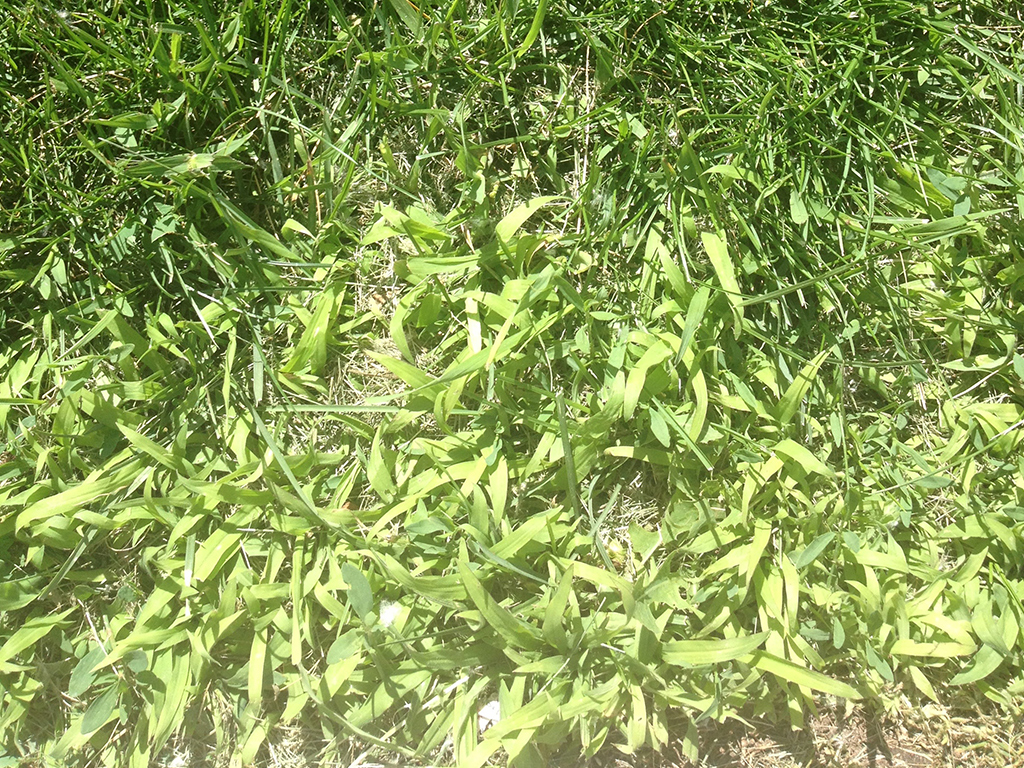
Crabgrass emerging in bare ground earlier than turf. | Download this photo.
Late summer crabgrass: time to let go?
Chemical controls must be applied at the right time to be effective
August 18, 2017
MANHATTAN, Kan. — Crabgrass is a forever foe for home lawns, mainly because control measures can be so tricky.
The best chemical controls for crabgrass are pre-emergence herbicides. This means that the herbicide must be applied to your lawn before the crabgrass seeds begin to germinate. And when exactly is that?
Generally, the best time to apply those herbicides is in the spring, so that they have time to catch all the crabgrass plants before they start growing. Pre-emergence herbicides are completely ineffective on mature crabgrass.
But in late summer, there’s another point to consider: What are your plans for September? September is the optimal time for overseeding your lawn to thicken up the turf and cover bare spots (as well as a complete reseeding, if that’s the choice).
“What happens is we get into September and you lay down your lawn seed,” said Jared Hoyle, assistant professor and turfgrass specialist with K-State Research and Extension, “but there are crabgrass plants that might have broken through the pre-emergence herbicide, or the pre-emergence herbicide just may have run out of steam. Now we need to get rid of those plants before we start seeding.”
Hoyle said there are a couple different options. “You can go with quinclorac, found in name brand products like Drive, which is a post emergence herbicide. That will kill existing crabgrass,” he said. “But quinclorac will not prevent any more crabgrass seeds from germinating.”
Another advantage of quinclorac: It can still be applied just before, or soon after seeding a turfgrass area, and it will not significantly interfere with germination of those grass seeds, if you planted one of the varieties that are tolerant. As with any herbicide you use, make sure you read the label, and follow directions accordingly.
“You are probably not going to have too much more germination this year,” Hoyle said, “but as long as it's warm there’s a possibility that crabgrass can still germinate.”
The last option for dealing with late-season crabgrass: Just wait. Crabgrass is a summer annual so when it gets cold it will die off.
“The problem with waiting,” said Hoyle, “is where the crabgrass is located in our lawn. If it’s springing up in the spot where we want to grow new turfgrass, waiting may not be an option.”

